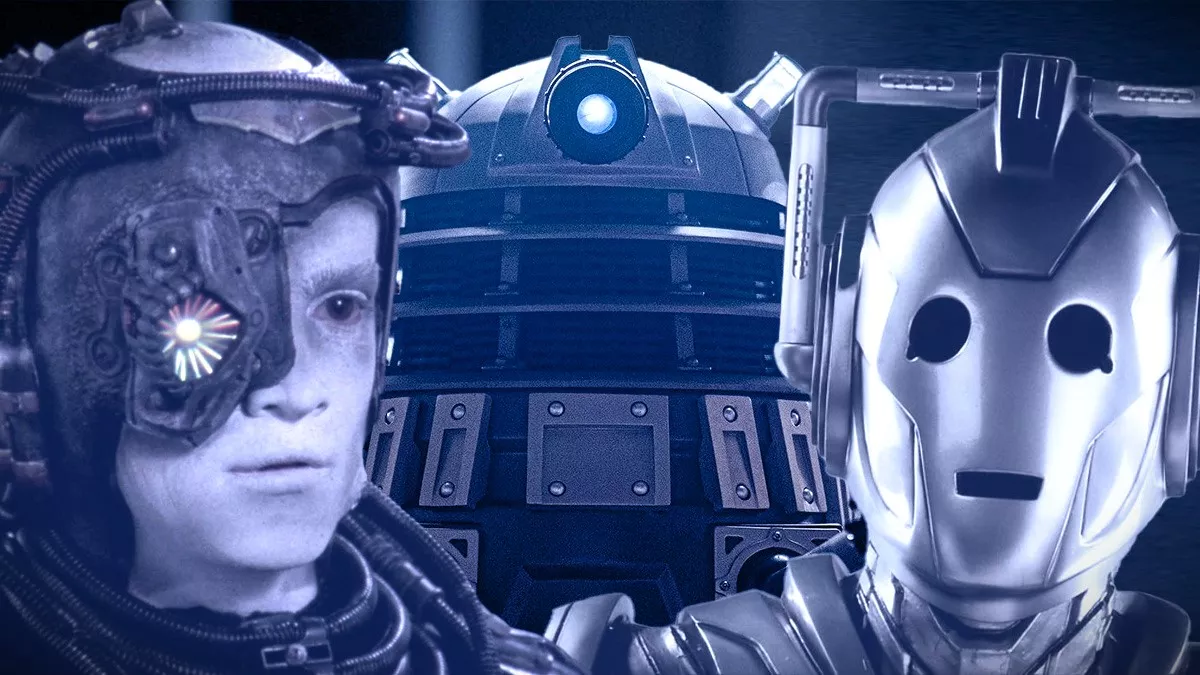We’re fans of Doctor Who’s aliens and Star Trek’s aliens. However, the burning question remains: which ones are superior? The answer lies in a thrilling showdown: LET THE BATTLE BEGIN!
What captivates us about science fiction? Is it the ability to extend technological and sociological possibilities beyond our current boundaries? Does it provide a means to contemplate our existence within an expansive and enigmatic universe? Or does it offer a fresh lens through which we can examine the intricacies of the human condition?
No! None of those reasons suffice. It all boils down to one thing: aliens. Aliens reign supreme as the most exciting aspect of science fiction, which is why we can undertake the objective and accurate task of ranking prominent science fiction franchises based on the quality of their extraterrestrial beings.
Amongst these franchises, Doctor Who and Star Trek stand tall, boasting extensive alien cultures and rich lore (Please engage in friendly debates about Star Wars vs Farscape in the comments, while being considerate towards the lone defender of Babylon 5).
To determine, once again in an objective and accurate manner, which aliens reign supreme, we must meticulously evaluate a complex web of interconnected criteria, scientifically assessing each one to ascertain the ultimate victor.
The Best-Looking Aliens?
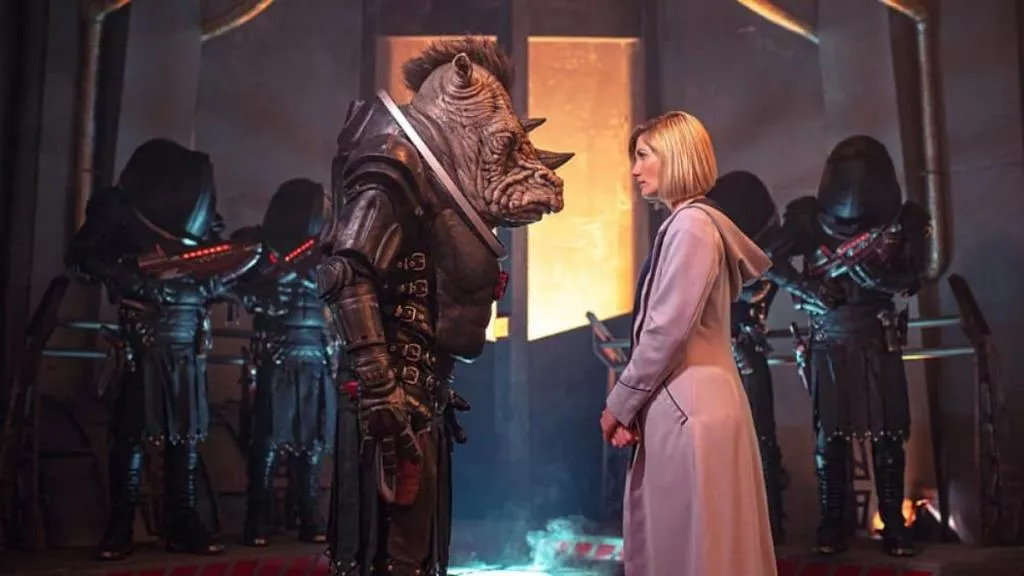
Determining the winners in the category of best-looking aliens is undeniably in favor of the Doctor. While Star Trek showcases a few notable contenders such as the Horta, Tholians, Gorn, and the Tardigrade on Discovery, the majority of Star Trek’s alien life, spanning all quadrants of the galaxy, tends to consist of humans adorned with prosthetics at best.
Regrettably, at worst—and we cannot ignore this—there are instances of blackface.
Naturally, Doctor Who has also featured species that coincidentally evolved to resemble humans (including the Doctor themselves), with some merely differing in appearance due to an extra touch of eyeliner.
However, these are not the aliens for which Doctor Who is celebrated. The series is renowned for its creatures like the Zygons, menacing shapeshifters composed entirely of tentacles, the imposing rhinoceros-faced Judoon, the fish-like vampires of “The Vampires of Venice,” the gigantic green-clawed infants of the Raxicoricophallapatorians, Bo’s colossal countenance, carnivorous shadows, and last but not least, the repulsively mutated cycloptipus that operates a Dalek.
These are beings that truly embody otherworldliness. While the Doctor’s TARDIS may inexplicably be drawn to Earth (especially the southern regions of England and select parts of Wales), the extraterrestrial creatures that emerge from other corners of the galaxy are a captivating sight to behold.
However, let us remember that judging an alien solely by its external appearance would be unfair, so…
The Most Fascinating Contact Stories?
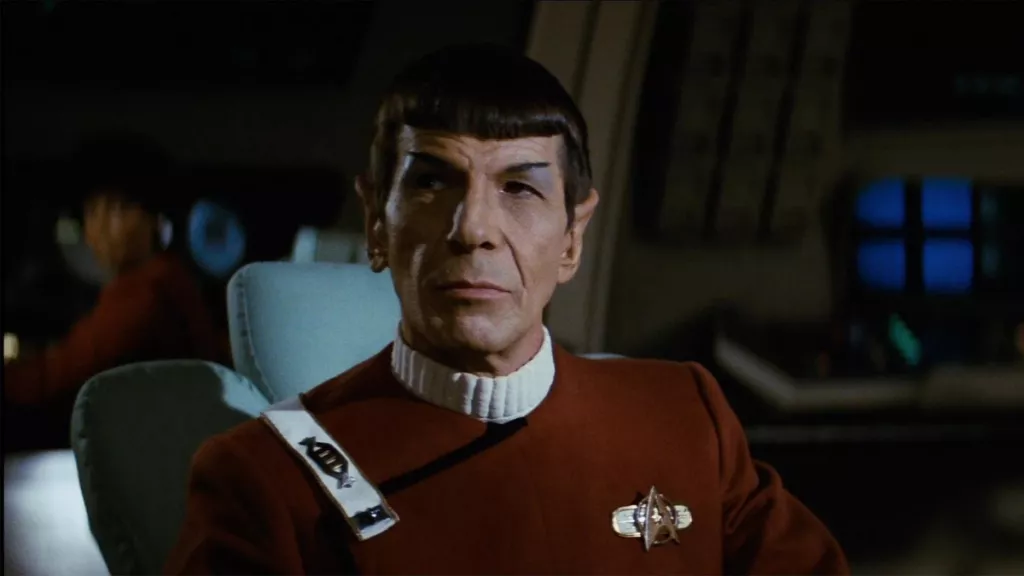
Our fascination with stories featuring alien lifeforms extends beyond their peculiar appearances; it delves into the realm of their unique thought processes. A prime example of exceptional alien storytelling in recent years is the film Arrival, which introduced temporally non-linear beings that communicate exclusively through coffee cup stains. Another notable contribution to the portrayal of alien thought comes from Adrian Tchaikovsky’s “Children of” trilogy, where uplifted spiders, octopuses, and ravens showcase alternative ways of thinking. Tchaikovsky adeptly demonstrates that the human perspective is but one subjective viewpoint, inviting readers to explore the minds of non-human entities.
In this domain, Star Trek fares considerably well. One of its most renowned aliens, Spock, reputedly rejects emotion, providing us with a perspective rooted in pure logic (as interpreted by television writers). This perspective often diverges significantly from that of his human crewmates, yet remains equally valid.
Indeed, Spock’s character served as a template for Star Trek writers, who frequently employed the winning formula of “cast an actor with impeccable comedic timing and portray a character who struggles to grasp humor.”
However, Star Trek offers us an abundance of new perspectives. Long before Arrival, Benjamin Sisko was teaching the concept of linear time to wormhole aliens, and we encountered the Binar, who operate within hiveminds of two.
Yet, despite Star Trek’s wealth of intriguing ideas, its alien societies often adhere to a similar structure. If you belong to an alien civilization in the Star Trek universe, there’s a good chance you possess warp drive, transporter beams, shield technology resembling phasers (perhaps referred to as disruptors for variation), and ship-to-ship communication reminiscent of a Zoom call. Even the highly alien species like the Borg largely fit this pattern.
Of course, it’s undeniable that many of the Doctor’s encounters with aliens follow a certain formula as well. While the Doctor does visit various alien planets, most aliens fall into one of two categories: either launching a full-scale invasion of planet Earth or executing a covert infiltration of the planet.
However, the methods and motivations for these invasions vary vastly, as do their interactions with more humanoid characters. Take, for example, the Weeping Angels, who appear as ordinary statues but can only move when unobserved, thereby introducing intriguing creative possibilities. The Silence’s invasion method, rooted in being forgotten, forces our heroes to devise innovative means of tracking them, just as the blind dream crabs can only locate their targets if their eyes remain open.
The reason for such diversity ultimately lies in the essence of these alien narratives and what they seek to explore.
The Best Storytelling Subtext?
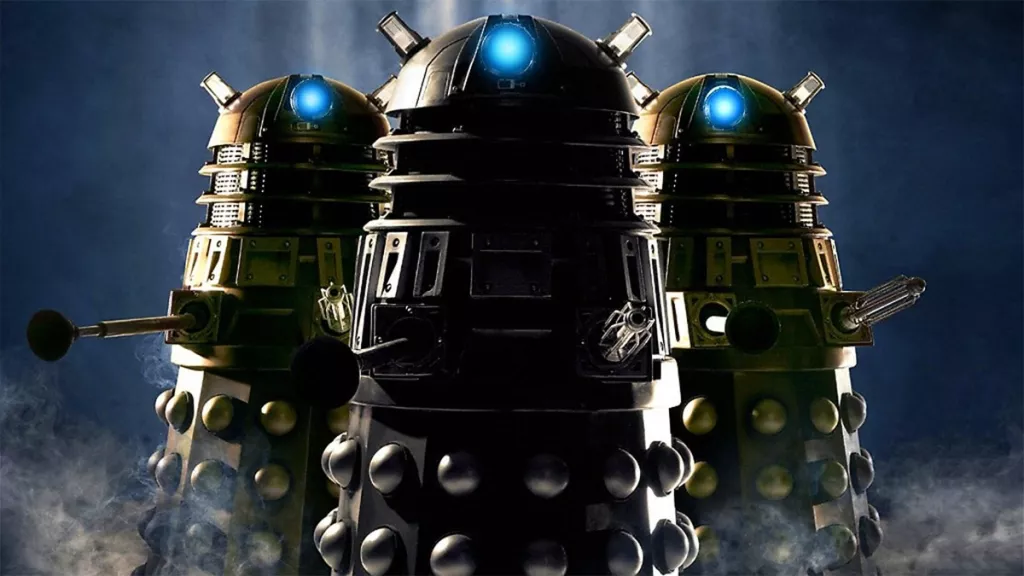
Prepare to have your mind blown for a moment. Surprisingly, a significant portion of science fiction possesses metaphorical subtexts, and at times, even political ones.
In fact, brace yourself for this mind-blowing revelation: many stories within the original Star Trek series actually served as a commentary on the Cold War (yes, it might be shocking, but it was done with incredible subtlety).
Due to this context, the scope of interactions between the Enterprise and other alien species was somewhat limited. After all, the Enterprise is a Starfleet vessel embarking on military, diplomatic, and scientific missions. It operates under specific orders, regulations, and protocols when encountering aliens.
These encounters could involve diplomatic conferences (although it’s slightly peculiar that Starfleet’s most important flying conference center also happens to be its most formidable battleship), saber-rattling along interstellar borders, or cautiously visiting uncontacted worlds while striving to avoid any semblance of colonialism.
On the other hand, the Doctor’s adventures are akin to a never-ending gap year, where the duration is measured by the planet Neptune. The Doctor is not bound by rules and can stumble, barge in, or be abducted and thrust into a myriad of situations. The aliens encountered by the Doctor represent a broad spectrum, encompassing political ideologies, childhood fears, anxieties surrounding technology, and even weaponized playground games.
Admittedly, part of this divergence stems from the fact that Doctor Who ventures into the realms beyond strict categorization as “science fiction,” traversing into the territories of horror stories and fairy tales. Its aliens often transcend the label of mere “aliens”; they assume the role of monsters lurking in shadows or beneath our beds. In contrast, Star Trek’s aliens, with a few exceptions, aim to be our equals and opposites.
So, get ready to embrace the mind-expanding universe where science fiction entwines with deeper meanings.
The Best Emotionless Cyborgs?
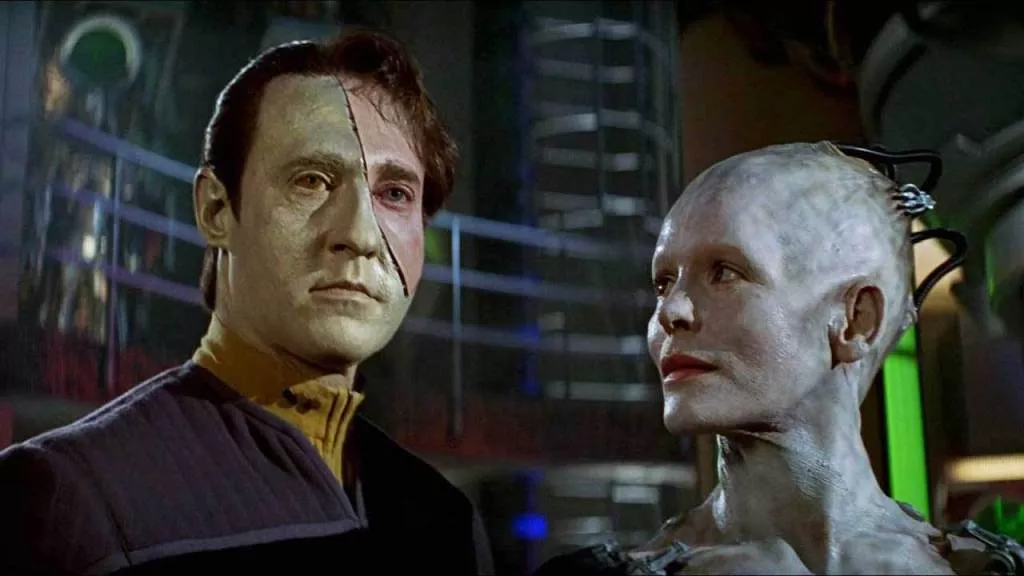
To truly grasp the contrast, we need only examine a shared concept that both franchises stumbled upon (and we’ll graciously assume that Star Trek arrived at it independently rather than outright borrowing it). That concept is cyborgs devoid of emotion, connected through a hivemind—the Borg and the Cybermen.
In both cases, there can never be more than a fleeting truce with these cyborgs (although Lower Decks does offer a glimpse of a future with Borg schoolchildren). Both pose a threat to our identity, individuality, and employ technology as a dehumanizing force.
Over time, both have evolved into what can be described as robo-vampires, infecting as many individuals as possible, transforming them into half-machine slaves devoid of their former selves. It is often frustratingly easy to defeat them with the conventional “destroy the head vampire” strategy, which undermines the essence of a decentralized hive mind. But that’s a rant for another time.
The Borg would have been much more intriguing had they maintained the portrayal witnessed in “Q Who?,” a society that nurtured cyborg infants in drawers and only sought to assimilate technology after eradicating troublesome organic beings. Originally, they would have been even more alien, but budgetary constraints eventually led to diluting the insectoid premise into more humanoid cyborgs.
The Cybermen, on the other hand, are far more captivating in their original incarnation—a society that had taken mechanical prosthetics to their logical extreme, transforming themselves into the monsters they became in order to survive. When these Cybermen claimed to have eradicated all emotion, you believed them, and no Cyber-voice has surpassed the puzzled speak’n’spell intonations of those in “The Tenth Planet,” questioning why Earth’s humans wouldn’t want to “be like us.”
Far from being entirely alien, the Cybermen hailed from an alternate Earth. They represented humanity’s potential future. And those Cycloptopus mutants within the Daleks? They too started off resembling humans. The Toclafane from “The Sound of Drums” and “Last of the Time Lords,” the Dregs from “Orphan 55,” the Haemovores from “The Curse of Fenric,” the Futurekind from “Utopia”—all exhibit human origins. It almost leads one to suspect that the Doctor’s protective nature towards humanity stems from the knowledge that if left unattended for a mere five minutes, we would inevitably transform into genocidal monsters.
Before Star Trek becomes overly self-righteous about having genuinely alien aliens, it’s worth noting that its own original show bible was based on the concept of “Parallel Worlds.” This explains why the original series took us to a Nazi planet, a Gangster planet, a world where the Roman Empire never fell, a planet identical to Earth except all adults died, and children became immortal.
While we’ve been embroiled in the Doctor Who versus Star Trek debate, The Twilight Zone has sneaked in with one of its trademark twists: the greatest aliens were humans all along.
